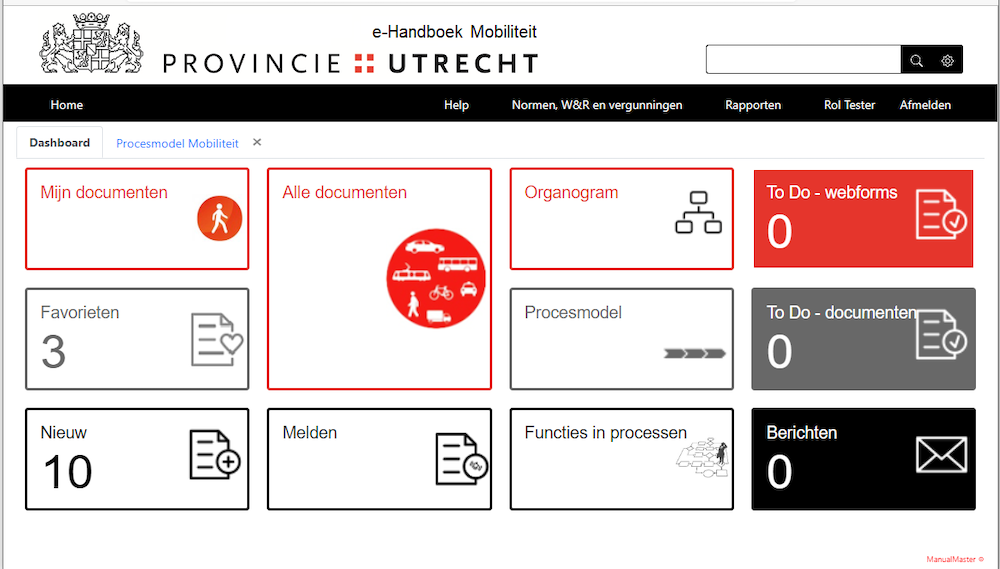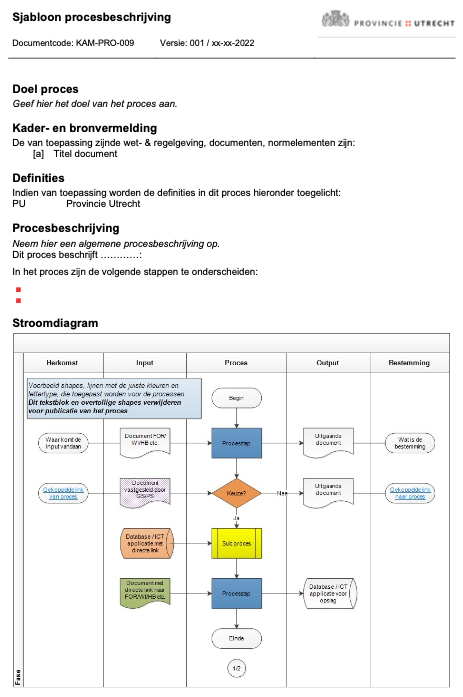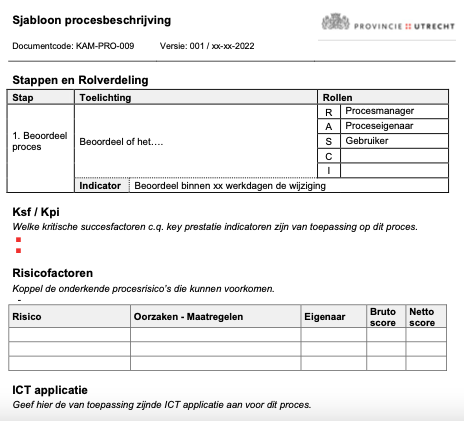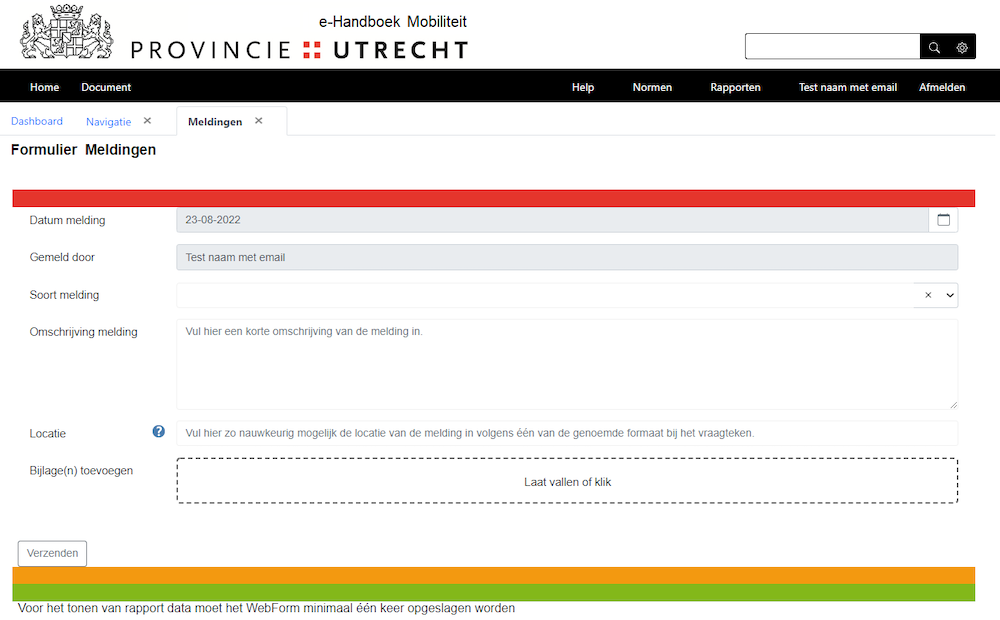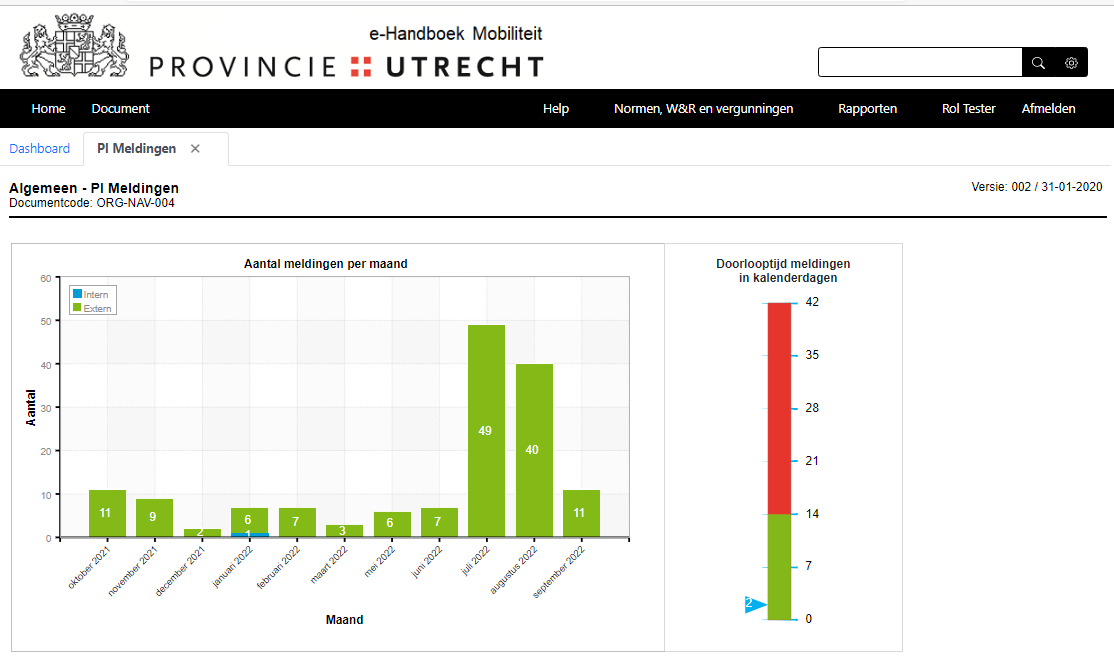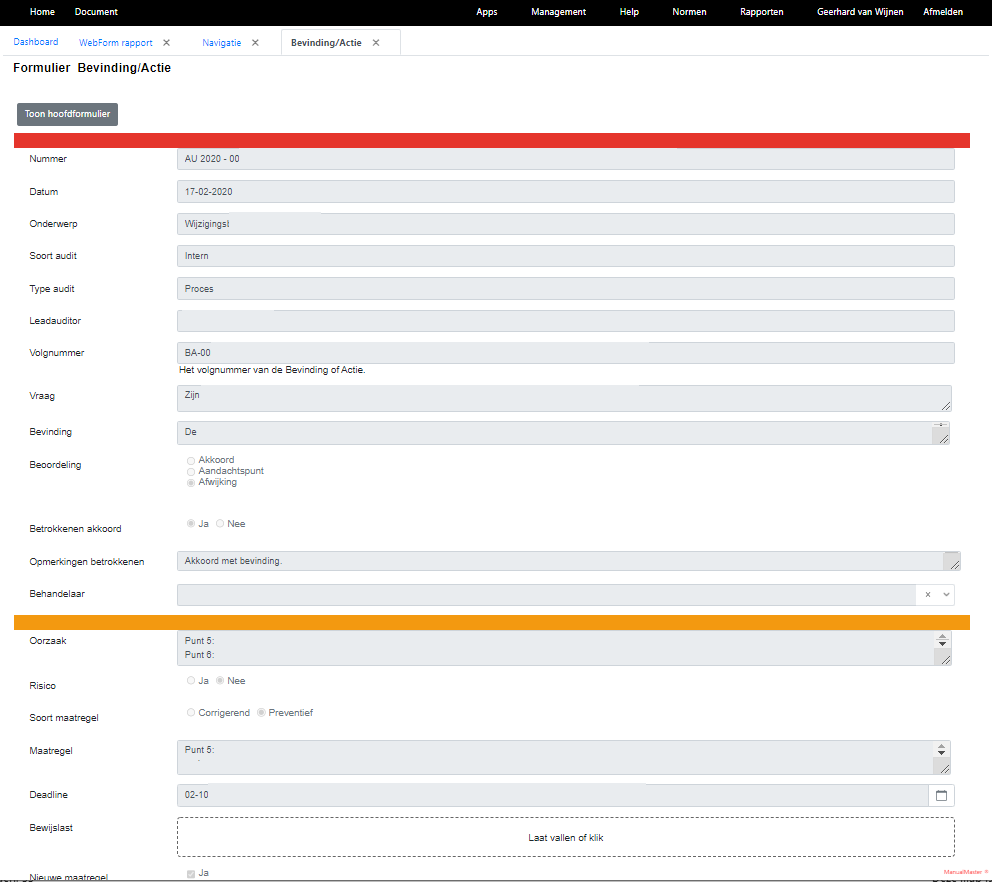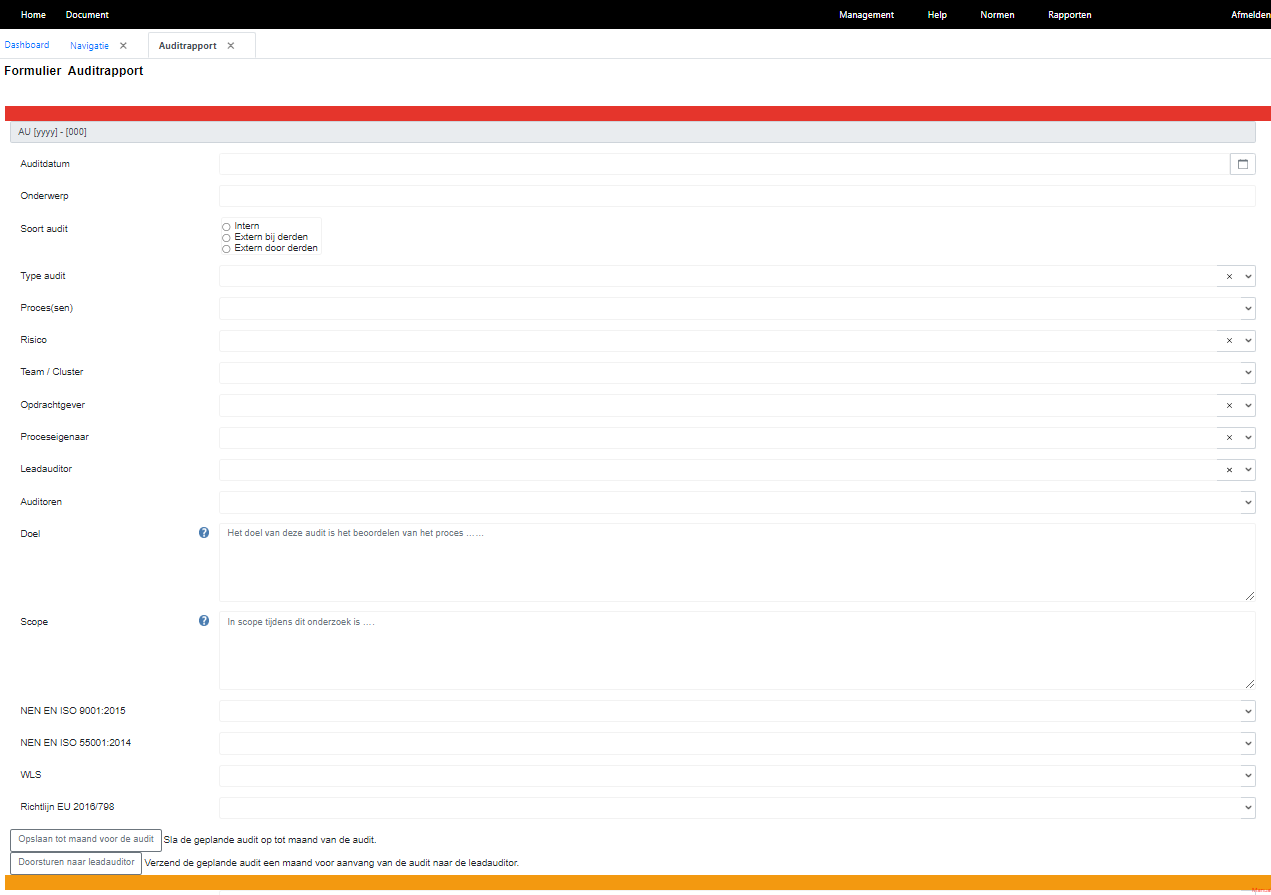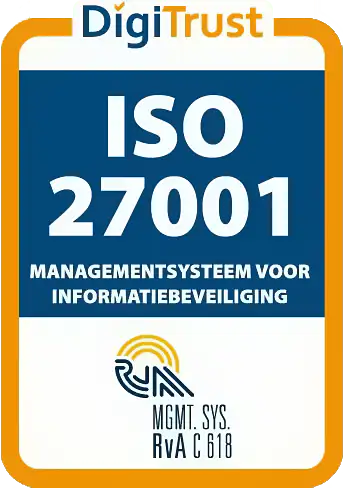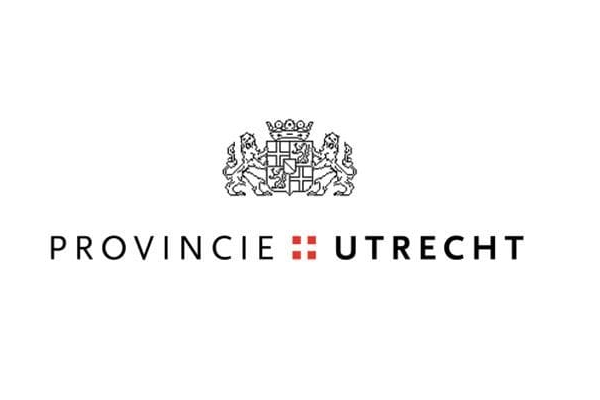
Process, Complaint, Risk and Audit Management: ManualMaster is a complete package for the Province of Utrecht
In 2017, Geerhard van Wijnen, quality manager at the Province of Utrecht / domain Mobility, started setting up the so-called e-Handbook that is managed through ManualMaster. By now, more than 400 civil servants can use this e-Handbook.
‘We were looking for a system that makes it easy to search for established documents . And a system that makes it easy to keep the information up to date’, explains the quality manager. After the e-Handbook met the expectations, the organization expanded their use of ManualMaster. ‘Our Document Management System contains documents, manuals, and forms. We describe the organizational structure, as well as process descriptions with links to laws and regulations. Then there is complaint registration, and we use it for a part of our audit management.
Dashboard Mobility
Clearly Defined Tasks and Authorities
‘The Document Management System was initially small in scope but has now been rolled out across the entire Mobility domain. If it were up to me, the application would be rolled out across the entire provincial organization,’ Geerhard enthuses. ‘Tasks and authorities are clearly defined by functions (roles) in the system. This is done through process descriptions in which we apply the RASCI model. These describe who is responsible for what.’
Domain Mobility of the Province of Utrecht deals with projects in the field of management and maintenance of the provincial traffic network, passenger transport (buses and streetcars) and the inspection and management of a part of the provincial waterways. The domain is also responsible for directing regional public transport and tramway maintenance and management. So, the demand for streamlined processes is high, especially in view of the four different locations in which domain Mobility is located.
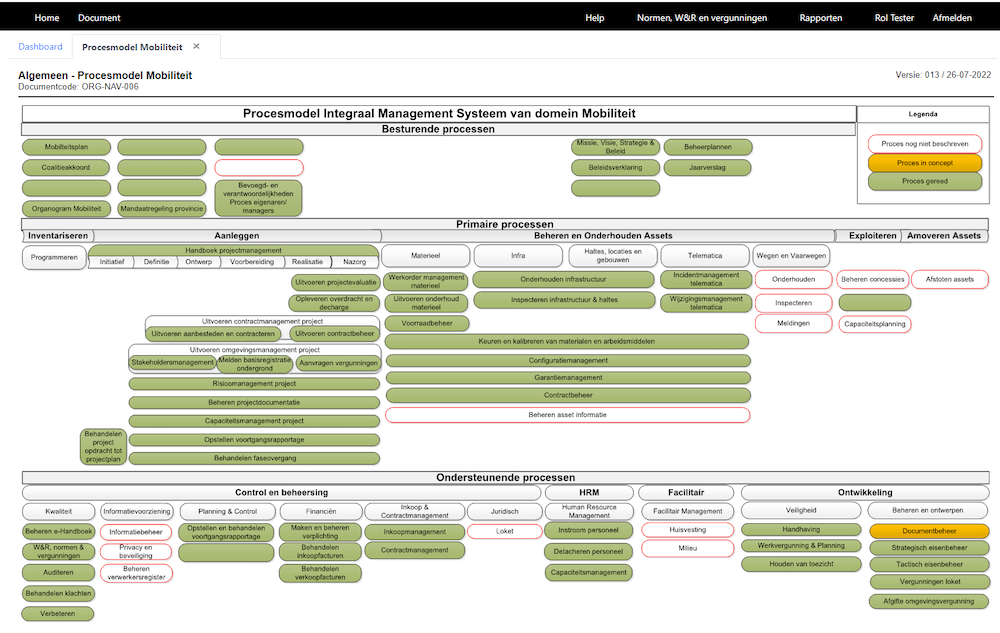
Model Process Description
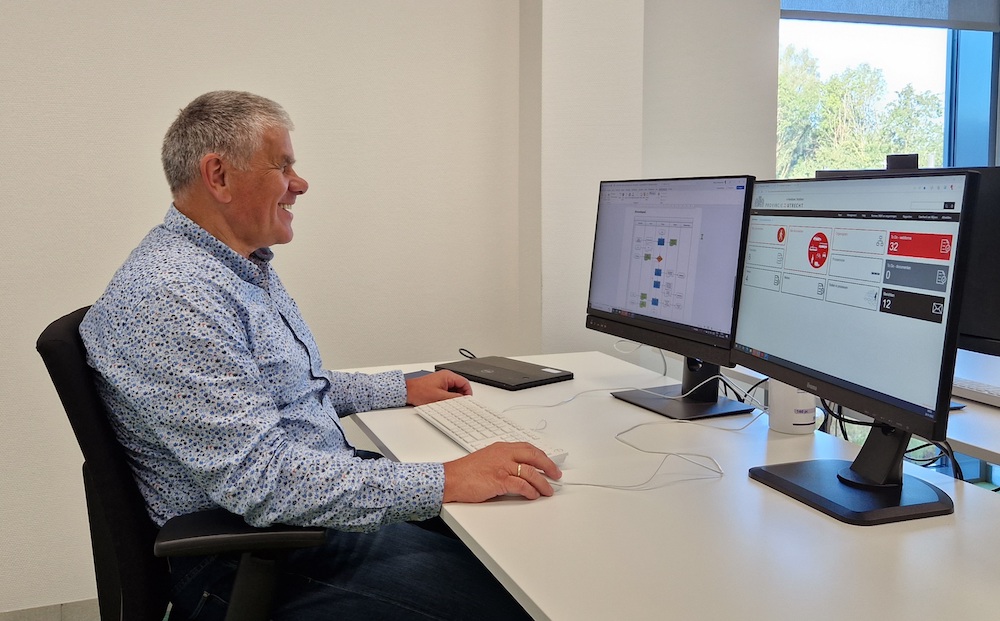
Geerhard van Wijnen
Province of Utrecht / domain Mobility
| Main activity | Manage provincial traffic network and public transport |
| Works with ManualMaster since | 2017 |
| Uses ManualMaster for | Document Management – Risk Management – Q-Learning – WebForms |
Transparent overview and recorded document versions
Among other things, Domain Mobility must meet requirements laid down in the Local Railways Act, which includes safety standards for local rail infrastructure. Geerhard: ‘We aim to work according to ISO 9001 and ISO 55001. Through this Document Management System, we have made links to the laws and standards. All relevant articles are named in the system along with descriptions of how they help us meet the requirements. This allows supervisory organizations to immediately see how compliant we are, how our processes are structured and where there are gaps and blind spots that need to be fixed.’
And how does the end user benefit from the software? ‘Our end users can see the webpublication of the e-Handbook on a ManualMaster dashboard. This way, they know where to find the information they need, and they can be sure that they have the established version of a document. With the link to laws and regulations and responsibilities, we point out to people what needs to be done within the organization and how they can get it done.’
Our end users can see the webpublication of the e-Handbook on a ManualMaster dashboard. This way, they know where to find the information they need, and they can be sure that they have the established version of a document.
Capture business processes with Process Management
With ManualMaster, the quality manager maps an essential part of the Process Management domain of Mobility. For example, business processes in the areas of risk management, project management, streetcar equipment maintenance and infrastructure maintenance are captured in the system.
Geerhard shows the process model containing the many processes that have been identified, which can be accessed by all employees through the standard dashboard.
‘In terms of process description, we work with a standard template. This includes purpose, framework and source reference, definitions, a global process description and flow charts detailing the various steps, explanatory tables, and indicators such as lead times. You can add critical success factors, KPIs and risk factors.’
‘ManualMaster also provides us with an overview of the various functions within the processes. You click on the function and see what role someone has and what they are involved in right away. Imagine there are no more auditors available, what consequences would that have for a process? In such a situation, the system shows where an auditor is involved. The management can then quickly decide whether and how quickly a replacement is needed.’
Complaint management provides essential data
Internal and external complaint registration also runs through ManualMaster. Pictures can be added to the forms to clarify situations and indicate the type of report. The data provided by these forms gives us good insights into what is happening in the organization and what trends are occurring. Thanks to this data, we know what to expect. Ultimately, the complaints automatically reach the person who can handle them and answers the complaint.’
Plan-Do-Check-Act method
‘We use the same system for complaints and for our audits, which we also register in the application. For example, the audit planning and audit findings can be found in the system. Geerhard: ‘Deviations identified during an audit are registered in the system by means of the findings form. This allows us to follow up on these deviations according to the Plan-Do-Check-Act method, and act accordingly regarding the set points for improvement (CAPA).
Every year an annual audit plan is made for our domain. The registration of the audit reports, findings and follow-up actions run through a workflow within ManualMaster using forms created with WebForms. All these different forms are linked together for data exchange.’
Each quarter, management receives a report of complaints and audits, which is also generated through ManualMaster.
All documents clearly visible in one place
Geerhard: ‘The strength of the system is that all documents are well archived and visible to the users in one place. You can create an overview very quickly. After all, nothing is as detrimental to an organization as documents that wander across different locations and remain there. If you place them in a fixed and recognizable environment, that version of a document becomes leading for everyone. That is the most efficient way of working.
Automatic verification and authorization
‘Before we can publish documents, we always need verification and authorization from the process manager and process owner, which is set up through permissions. What used to require a physical signature is now done digitally and automatically through the system. This makes the application incredibly powerful.
Documents are regularly reviewed to see if they need to be revised. The review of documents also happens automatically. A process owner or process manager receives a notification at the right time asking whether certain documents are still valid.
This way, it’s easy to keep documents up-to-date. And when a change in master data is necessary, e.g., a definition or external links, it is simultaneously implemented in all documents.’
Q-Learning for newcomers
ManualMaster is gaining traction within the province. Geerhard: ‘Colleagues are continuously informed about the possibilities and business processes through newsletters and meetings. They see how ManualMaster works and how it facilitates their work. New employees receive a standard introduction taking them through the application. We intend to eventually use the Q-Learning functionality for this onboarding.’
‘You can benefit a lot from the software as an organization. It makes so much possible. But … think before you begin. Properly map out what you want to achieve and find out how ManualMaster can help you achieve that.’

